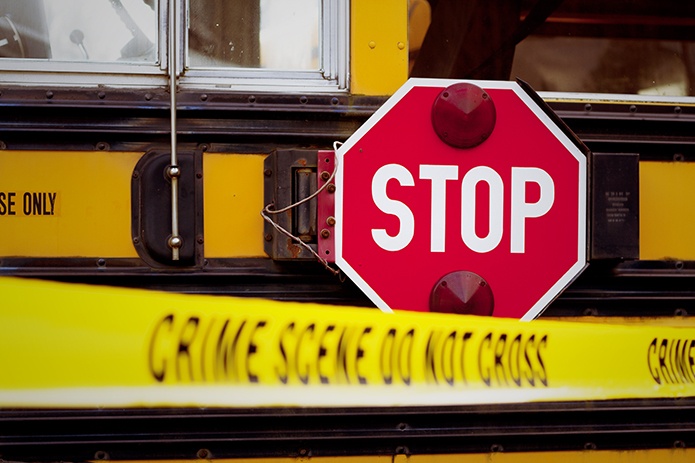
Don’t Be a Bystander
Since 1993, I have served as an expert witness involving litigation concerning sexual harassment and assault of school age children with disabilities transported on school district vehicles traveling to or from school, including school activities. These lawsuits have consisted of sexual harassment and assault by drivers and attendants as well as student-on-student sexual harassment and assault. To ignore what I have observed over the past 29 years, places me in the unacceptable position of bystander, an individual who is unwilling to share knowledge to intervene and attempt to prevent such horrific events from occurring.
No school age child with a disability, especially vulnerable children unable to protect themselves, should be subjected to sexual harassment or assault on a school district owned or approved contractor vehicle. Reckless exposure and endangerment to sexual harassment and assault, can only be corrected when there is a willingness to focus on this problem. This difficult and complicated subject matter merits the attention of school district transportation personnel accountable and responsible for the provision of daily safe transportation.
Disregarding knowledge of sexual harassment and assault occurring during school transportation will not resolve this undesirable problem. If you question the prevalence or incidence of its occurrence, type in the following google search request: “sexual harassment and assault of children on school district vehicles.” You will be disturbed by the significant number of newspaper articles concerning this undeniable transportation issue. While it may be difficult to address the occurrence of transportation sexual harassment and assault, it is necessary to openly acknowledge and discuss the potential existence of this hostile transportation environment in your school district. Inappropriate activities include verbal, nonverbal, sexual harassment or abuse during transportation. This article focuses on student-on-student sexual harassment and assault. An open dialogue is a starting point to focus on this unwanted critical issue.
The United States Department of Education’s (USDE) Office of Civil Rights (OCR) issued resource guidance in July 2021. This guidance document, titled “Questions and Answers on the Title IX Regulations on Sexual Harassment,” is a comprehensive 56-page manuscript in which the OCR advises school districts about how to respond to claims of sexual harassment in accordance with the current Title IX regulations. While this resource attempts to provide clarity, it is not legally binding and is identified as guidance. It should be noted that the USDE shared that it is planning to take a comprehensive review of the current Title IX regulations in 2022 that were most recently amended in 2020.
Title IX is not new legislation. It was originally passed in 1972 as the Education Amendments of 1972 and prohibits sex discrimination in any educational program or related activity receiving federal financial aid. School district transportation personnel must fully understand that transportation is not excluded from the provisions and requirements under Title IX. In recent years, the impact of sexual harassment and assault during transportation has elevated to unanticipated complications resulting in litigation.
In my role as an expert witness, I have repeatedly observed a failure to share and educate transportation personnel about Title IX requirements, resulting in negligence and the failure to provide safe transportation. Without exception, I have observed that drivers and attendants are not informed about their responsibility to prevent and protect the occurrence of student-on-student sexual harassment or assault. Drivers and attendants too often lack the knowledge, information and skills required to supervise children with disabilities transported and prevent sexual harassment and assault. The failure to timely respond to a suspicion of inappropriate behavior taking place on a vehicle can result in a Title IX violation and a negligence claim against the school district. This includes information shared by victims, other children on the vehicle and drivers and attendants.
A questionable school transportation practice is not reviewing video recordings when there is a reason to do so, especially after a sexual harassment or assault incident is first suspected or reported. Recent attention has been given to the correct protocol for reviewing video recordings that involve minors. As a result, more video recordings are submitted to the police department prior to review by the school district in order to avoid allegations of reviewing pornography. This matter should be addressed to assure school district policies and procedures and State law is followed.
In summary, I encourage transportation personnel to become knowledgeable about the requirements of Title IX to ensure that children with disabilities, one of our most vulnerable populations transported, are not victims of sexual harassment and assault. An essential starting point is appropriate Title IX training, including recommended supervisory safeguards that are ideal to enhance safe transportation. Unequivocally, transporters of children with disabilities do not want children with disabilities to become victims of sexual harassment and assault. You can make a significant difference by choosing not to be a bystander. The time is right to open a dialogue about this disturbing matter.
Linda F. Bluth, Ed.D. (linda.bluth@napt.org) is one of the nation’s foremost experts on special needs transportation. She currently serves as Special Needs Transportation Consultant for the National Association for Pupil Transportation® (NAPT).


